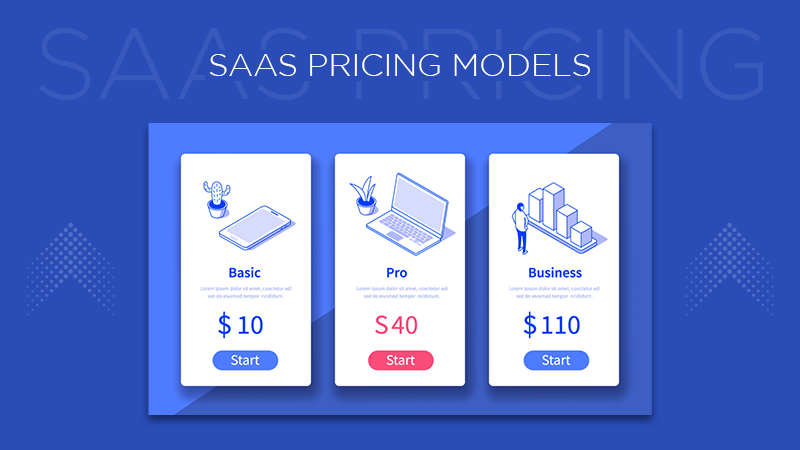The Ultimate Guide to Saas Pricing Models: How to Choose the Right One
Pricing doesn’t just imply financial implications in Software as a Service (SaaS) – it can actually be built into your product strategy. Pricing can have a powerful effect on how easily you can acquire users, how effectively you can retain customers, and the growth trajectory of your overall business. On the flip side, pricing your software incorrectly can limit your potential and leave money on the table.
This guide describes the most typical SaaS pricing models options, discusses how to select the pricing model that’s best for your business, and provides examples to better inform your decisions.
Understanding SaaS Pricing Models
SaaS pricing is a model for charging customers to access software. Unlike traditional software that is purchased and owned, SaaS products are sold on a recurring basis, typically monthly, quarterly, or yearly. By utilizing a recurring basis for pricing. A SaaS pricing models offers continuous revenue, while the buyers receive continuous value.
The way a SaaS company sets its prices can vary based on features, usage, seats (users), or different segments of customers. Pricing for any product is ultimately a balance between where the company sees value for revenue, the perceived value of the customers, and how complicated the product is.
Types of SaaS Pricing Models
There are several SaaS (Software-as-a-Service) pricing models available. These are some of the different ways SaaS companies can charge for their services online. Each pricing model works for different types of services and different customer requirements and has its own logic.
Here we will look at different SaaS pricing models.
Flat-Rate Pricing
By definition, it is a pricing model offered at a fixed price for all users, regardless of features or usage.
The best part about it is that it’s simple to understand, market, easy to bill, and manage. However, it doesn’t scale well for the needs of different users.
Tiered Pricing
This enterprise SaaS pricing model offers multiple packages based on feature sets, usage, limits, or customer types.
This type of model appeals to different segments and encourages upgrades. However, companies find it difficult to communicate the value of each tier.
Per-User Pricing
As the name suggests, it increases the cost with each additional user. It can be the best model for business-to-business services where the value of software grows as more users use it.
It offers predictable revenue and is easy to scale for growing teams. However, it might discourage collaboration in large teams. Sometimes, it can also lead to user sharing.
Per-Feature Pricing
This SaaS pricing structure separates out different pricing tiers based on the functionality of the service available in each. Generally, the greatest number of services is available in the highest-tier packages.
The SaaS providers tailor the offerings to different needs and maximize the value for power users. But this pricing strategy can be hard to explain to users.
Usage-Based Pricing
In this usage-based pricing model, the cost of the service depends on the customer’s actual usage of the service. It can be dubbed a pay-as-you-go plan.
It can bring new users who align with the perceived value of this pricing structure. It can be an easy entry point for new users. This model is harder to budget for large customers.
Freemium Model
In this model, the service offers some basic features for free and charges for more advanced or premium features. It isa great way to bring in new users and build brand loyalty by asking them to try the product first before committing financially. One downside of this model is that it can attract a lot of non-paying subscribers.
Subscription Model
The SaaS subscription model is one of the most popular pricing models available because it’s best for both customers and businesses.
With this model, customers can pay a regular fee – often monthly or annually – for access to their software cluster. This way, customers know what they are paying for and businesses have a steady source of revenue.
Also Read: The Rule of 40 in SaaS: Meaning, Benefits, Limitations, and How It Helps Investors and Founders
Some Examples of SaaS Pricing Models
After looking at different pricing models for SaaS, it’s time to look at some real-world examples of SaaS pricing models.
SaaS Pricing Models Examples:
| Company | Pricing Model | Notes |
| Salesforce | Tiered + Per User | Charges per seat with increasing features |
| Canva | Freemium + Tiered | Free version with Pro and Enterprise plans |
| HubSpot | Tiered + Feature-based | Charges based on tools used |
| Dropbox | Freemium + Usage-based | Free storage with paid upgrades |
| Zoom | Freemium + Tiered + Usage | Hybrid model depending on customer type |
How to Choose the Right SaaS Pricing Model
Selecting a pricing model is not about copying what your competitor is doing; it is about knowing your customers, product, and the market. Here are the steps to making the right decision.
1. Understand Your Customer Segments
Understand how different segments evaluate value. Do enterprise customers value advanced features or scalability? Do SMBs care more about getting a good deal?
2. Analyze Customer Behavior
Understand usage patterns. Are your customers power users or casual customers? Do they use every feature, or only a few?
3. Clarify the Primary Value Metric
What are you basing your core pricing model and value metric on? Users? Storage? Transactions? This should be the primary metric to think about when establishing your pricing model structure.
4. Test and Learn
You can utilize A/B pricing tests, continuous feedback loops, or voice of customer interviews to refine your pricing model. You are never done when it comes to pricing.
5. Be Straightforward and Clear
The goal is to keep it simple and clear, no matter how much your pricing model is. Customers will be hesitant if there are hidden fees or complicated terms.
Conclusion
SaaS pricing isn’t just a figure; it’s a strategic decision. It will determine what customers pay for your service, how clients perceive the value of your product, and how much you ultimately earn over time. Regardless of whether you are a bootstrapped startup or an enterprise SaaS corporation, deciding on a pricing model requires reflection, trial-and-error, and flexibility.
As you understand different SaaS pricing models, confirm product-market fit, and internally iterate based on the feedback and data, you’ll come to realize the full revenue potential of your SaaS product.
Read Next: What is B2B SaaS? Meaning, Companies, Examples, and More

